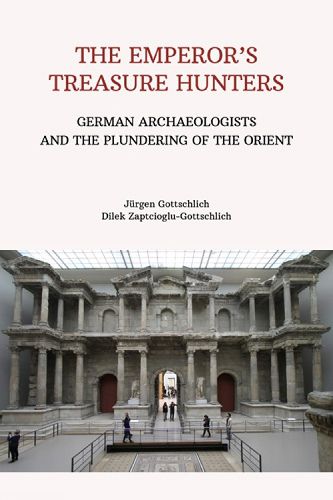Readings Newsletter
Become a Readings Member to make your shopping experience even easier.
Sign in or sign up for free!
You’re not far away from qualifying for FREE standard shipping within Australia
You’ve qualified for FREE standard shipping within Australia
The cart is loading…






The Pergamon Altar, the Market Gate of Miletus, the Lions of Babylon, the bust of Nefertiti - these are all treasures that we admire in German museums today. Where do these works come from? When and under what circumstances did they come to Germany? Are we actually the rightful owners of these world-famous cultural assets?
In this translation of a book originally published in German by Aufbau Verlag in 2021, Juergen Gottschlich and Dilek Zaptcioglu-Gottschlich take an in-depth look at the history of archaeological excavations and their transportation to the German Empire. The focus is on the expeditions of famous excavators such as Carl Humann, Theodor Wiegand and Robert Koldewey on the one hand and the predominantly nationalistic motives of their forays in the service of the Kaiser on the other.
While the debate on looted art has so far tended to focus on works of art from African and Asian colonies, this is the first book on archaeological finds in the former Ottoman Empire. Just as important as the demand for restitution is the question: How do we make this world cultural heritage accessible to as many people as possible?
$9.00 standard shipping within Australia
FREE standard shipping within Australia for orders over $100.00
Express & International shipping calculated at checkout
Stock availability can be subject to change without notice. We recommend calling the shop or contacting our online team to check availability of low stock items. Please see our Shopping Online page for more details.
The Pergamon Altar, the Market Gate of Miletus, the Lions of Babylon, the bust of Nefertiti - these are all treasures that we admire in German museums today. Where do these works come from? When and under what circumstances did they come to Germany? Are we actually the rightful owners of these world-famous cultural assets?
In this translation of a book originally published in German by Aufbau Verlag in 2021, Juergen Gottschlich and Dilek Zaptcioglu-Gottschlich take an in-depth look at the history of archaeological excavations and their transportation to the German Empire. The focus is on the expeditions of famous excavators such as Carl Humann, Theodor Wiegand and Robert Koldewey on the one hand and the predominantly nationalistic motives of their forays in the service of the Kaiser on the other.
While the debate on looted art has so far tended to focus on works of art from African and Asian colonies, this is the first book on archaeological finds in the former Ottoman Empire. Just as important as the demand for restitution is the question: How do we make this world cultural heritage accessible to as many people as possible?